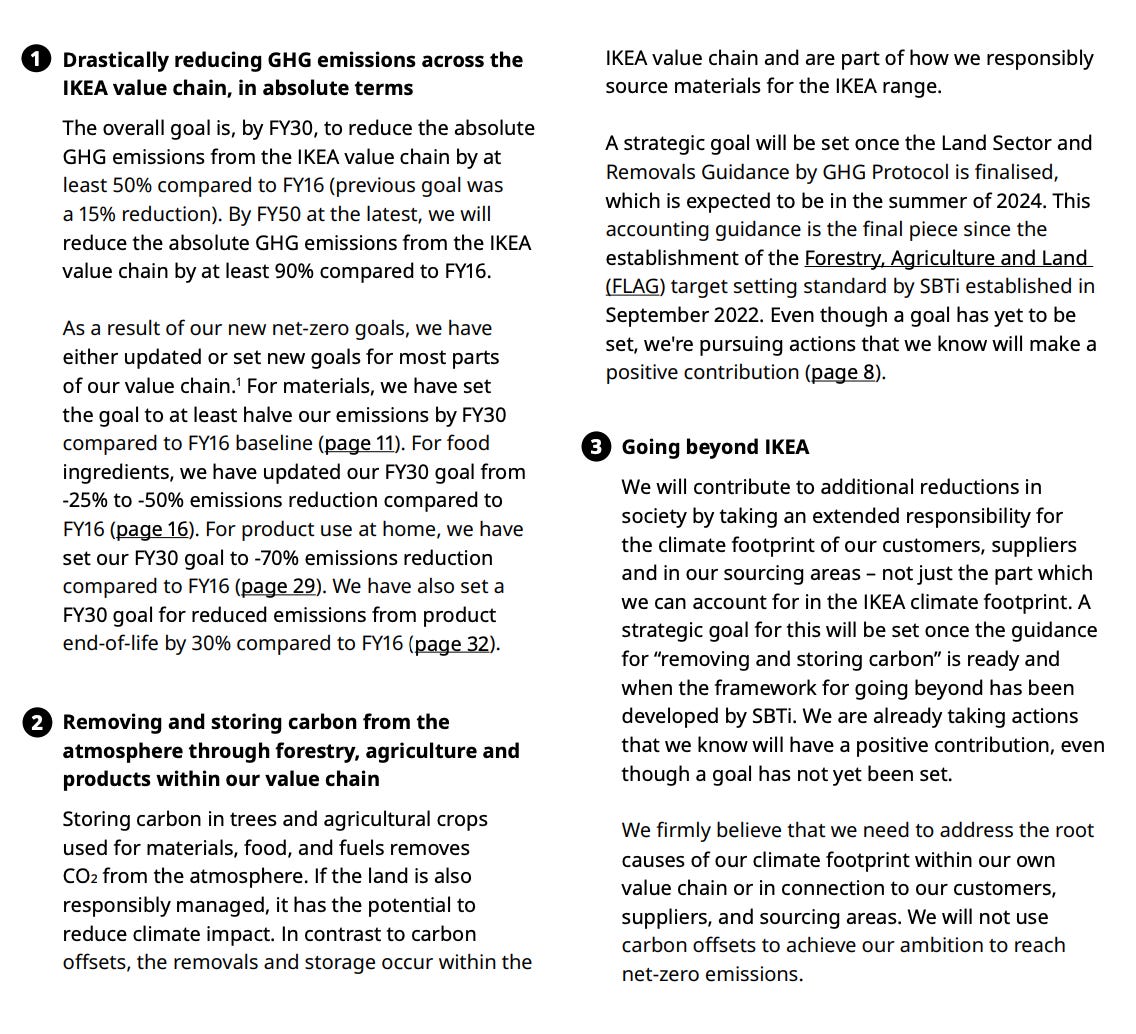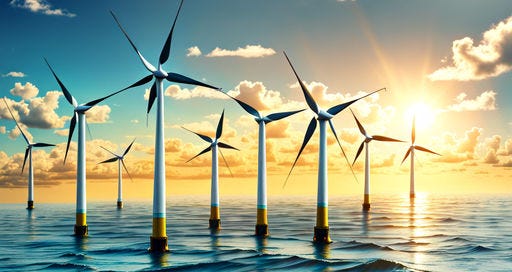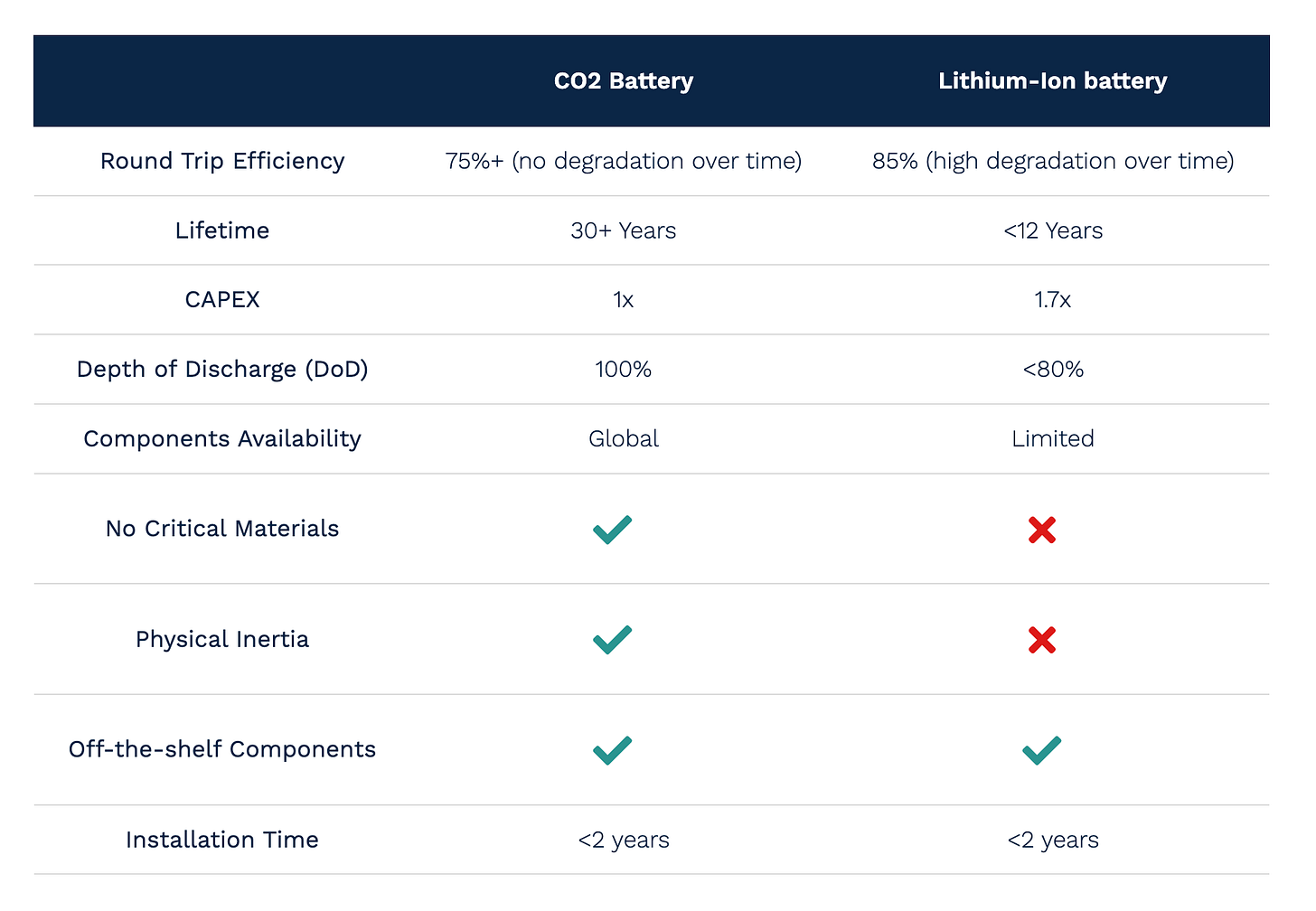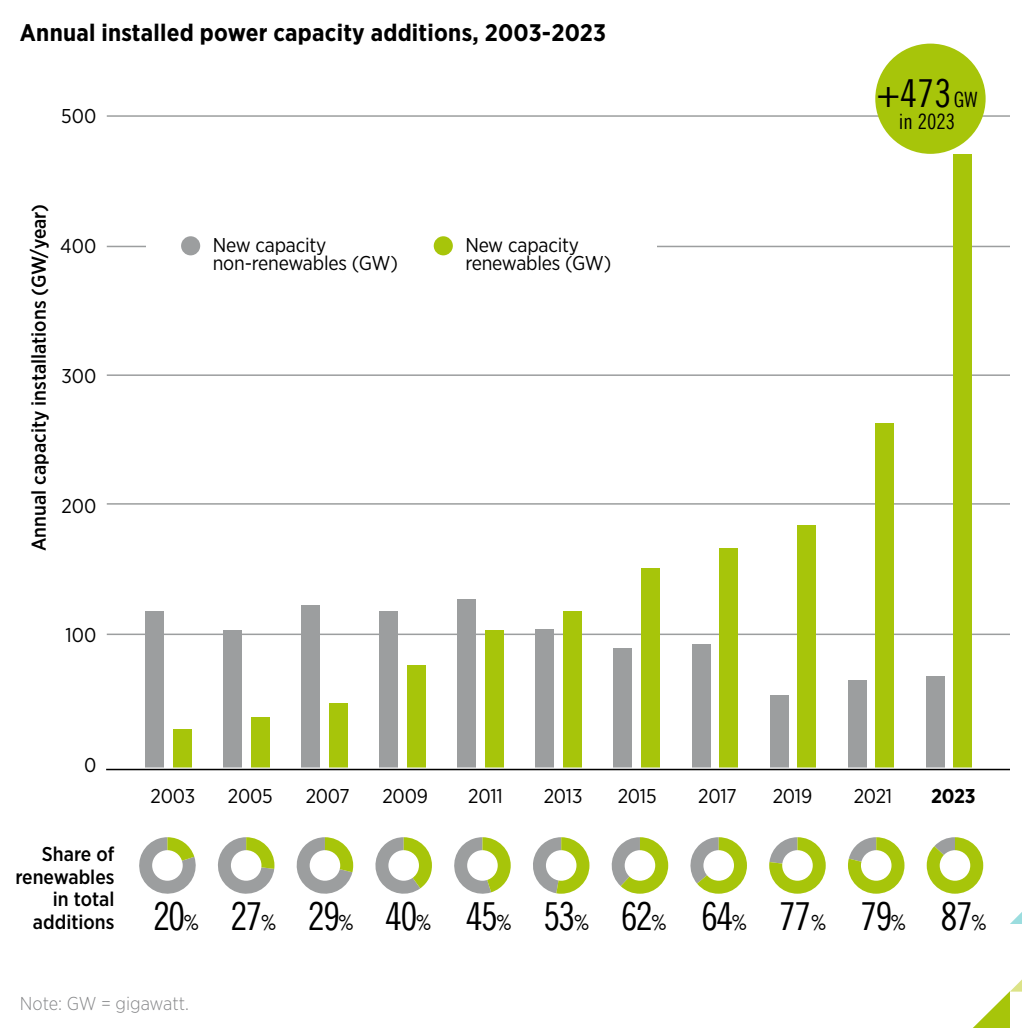Daily Climate News - March 18
CO2 battery; IRENA - tracking COP28 outcomes; floating offshore wind; biodiversity protection
A CO2 Battery?
Italy-based startup, Energy Dome has an interesting approach to energy storage. During daytime hours, when there’s excess supply of electricity from solar plants, the company uses the energy to compress carbon dioxide into a liquid. When energy is needed, the liquefied CO2 is allowed to expand to a gas and this expansion is used to drive a turbine generator. Here’s a comparison from Energy Dome on their CO2 battery vs conventional Li-ion batteries:
Currently, the company has a demonstration plant in the Sardinia region in Italy. America’s Westinghouse is also betting on CO2 based long-duration energy storage.
(NOTE: Liquid carbon dioxide cannot be obtained at atmospheric pressure. You need high pressures > 5 atm and temperatures below 31℃. Simply cooling carbon dioxide at atmospheric pressure gives you a solid - dry ice - at a temperature of -79 °C)
Elsewhere, in Japan, shipping company Kawasaki Kisen Kaisha (K Line) has partnered with gas supplier Tokyo Gas to evaluate the feasibility of transport carbon dioxide in liquid form from Tokyo to offshore carbon storage sites.
New York Times (recommended) | Energy Dome Website
IRENA Publication: Tracking COP28 Outcomes
IRENA has published a brief outlining progress in renewable deployments and what’s needed to meet the 1.5℃ scenario which requires additional 7.2 GW renewable power by 2030. The analysis shows that renewable installations have risen sharply but are highly concentrated in US, China and EU.
An average of almost 1,100 GW of renewables capacity must be installed annually by 2030 – more than double the record set in 2023. Annual investments in renewable power generation must surge from USD 570 billion in 2023 to USD 1550 billion on average between 2024 and 2030.
…the current battery electric vehicle (BEV) and plug-in hybrid electric vehicle (PHEV) stock would need to increase from around 40 million today to 360 million by 2030, a target that cannot be achieved at current growth rates.
The Brief shows that only Solar installation are on track with meeting 2030 goals while all other forms of renewable energy - wind, hydropower, bioenergy, geothermal, ocean energy - and EV and electrolyzer capacity additions are insufficient.
IRENA Press Release | Report (PDF)
In this newsletter:
Government Announcements
Offshore Wind
Sustainability
Biodiversity
Government Announcements
US Government has announced a ban on the last form of asbestos (chrysotile asbestos) used in the country. Under the new rule, there would a complete ban on asbestos in imports, but manufacturing facilities are allowed up to 12 years to phase out use of asbestos. The rule aims to “protect people from lung cancer, mesothelioma, ovarian cancer, laryngeal cancer and other health problems caused by asbestos exposure.” New York Times | EPA
Govt of Australia will invest A$840 million the country’s first combined rare earth mining + refining project operated by mineral exploration company Arafura. Innovation News Network | Press Release
India’s Ministry of New and Renewable Energy has announced guidelines for setting up green hydrogen hubs in the country. Under the scheme, support will be provided for storage and transportation facilities, developing and upgrading pipeline infrastructure, hydrogen compression and liquefaction technologies, water and effluent treatment, power transmission infrastructure. PV Magazine | MNRE Guidelines
Offshore Wind
Norway holds its first commercial offshore wind auction offering up 1.5 GW of capacity. ET Energy
Floating Wind Innovation Centre (FLOWIC), an innovation centre dedicated entirely to developing floating offshore wind technology has been launched in Scotland with funding from UK and Scottish governments. OGV Energy | ORE Catapult - FLOWIC
Nation Grid ESO, the transmission system operator in UK has recommended building an “electrical spine” - additional transmission from east coast of Scotland to Liverpool - to connect offshore wind installations to the national grid by 2035. Recharge | National Grid ESO - Beyond 2030
Sustainability
Ikea aims to reduce its transport emission by 70% by 2030 compared to its 2017 levels. The strategy includes more efficient shipping to reduce fuel use, using biofuels in place of fossil fuels, innovations to reduce supply chain emissions. Supply Chain Dive | IKEA Climate Report FY23

IKEA Climate Agenda Src
Biodiversity
The state of New South Wales (Australia) has committed A$100 million to a program at protecting koalas and biodiversity conservation. This includes building a new national park, protecting and restoring small patches of at-risk vegetation and restrictions on construction in “koala corridors”. Carbon Pulse | Cumberland Plain Conservation Plan
changeNOW and KPMG have published the Earth Action Report which ranks Biodiversity Protection as the top priority for systemic change. Top recommendations include halting deforestation, ecosystem restoration, promoting regenerative agricultural practices, increasing and enforcing protected areas, sustainable fishing practices, soil health and fostering community-led initiatives. Carbon Pulse
You can read over 200 stories from March 18 on Telborg.
Follow us on Twitter, Youtube, Reddit and LinkedIn.
Let me know if I can help with anything! Enjoy your day!
Best,
Soumya Gupta
Founder, Telborg.com | SummaryWithAI.com






